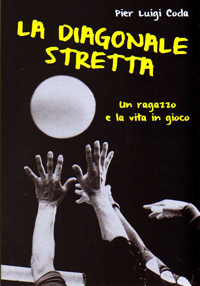 |
The cut shot
(Effatà Editrice - Cantalupa Torino)
Drawings by Silvia Aimar
Graphics by Silvia Aimar and Vito Mosca |
| The text |
 |

The places of the story
|
Title; "The cut shot" which refers to one of the most common and spectacular shots that are used in the game of volleyball
Background; an anonymous Italian city, then Oxford, Lausanne, Lake Geneva, Evian, a pinch of Stockholm and Geneva in the background, the game of volleyball with its historical myths (the great Italian champions the years 90) and the 'attraction of its charm
|
Synthesis; Pierre is a kid in the early years of high school, has only one desire, to become a volleyball player, sports highlights for which, in addition to a passion, an outstanding talent. Do not parents have the same opinion, especially the father and the child offers a bright future within their own family business. In this perspective wants to learn foreign languages and require him to complete his studies in England, to Oxford where, moreover, had already studied the mother. Pierre opposes attempts to escape the father's wishes, but he insists until Pierre, when pressed, but decides to leave for Oxford but to Lausanne, the city does not know anything. Here begins the real story: a world of discovery, language difficulties and the environment, the friendships that are left and those that are formed, the charms, the charm of the early emotional jolts of heart |

Oxford |

Lausanne |
Issues; the life of young people today, the misunderstandings with parents, the silences, the absence of relationships, family disagreements that make it more complex and difficult their lives. The opposition with his sister but also the strands that unite together in difficult times. And then, the construction of a new reality, the "follies", the nocturnal acts of bravado, the discovery of true friendships, the problematic entry in a new volleyball team and the hostile, opportunistic, distrust of the new coach ... and then the surprise final
Form, Language and Punctuation; the choice is in the form of a diary narrative / story, the language is, mainly, the current one, and talked of kids today, obviously quite "colorful". Do not forget that the family environment is that of a middle / upper class intellectual and entrepreneurial. The literary form favors, to the extent possible, the discursive and the expressions of the language.
|
Tenses; for dynamic narrative I thought appropriate to tell with past tense the events of the story and at present tense the personal reflections of the protagonist. Only the last chapter on game play-off is handled with the present, like a radio/telecast broadcast in real time.
|

The "Promenade des lacs"
|
|

